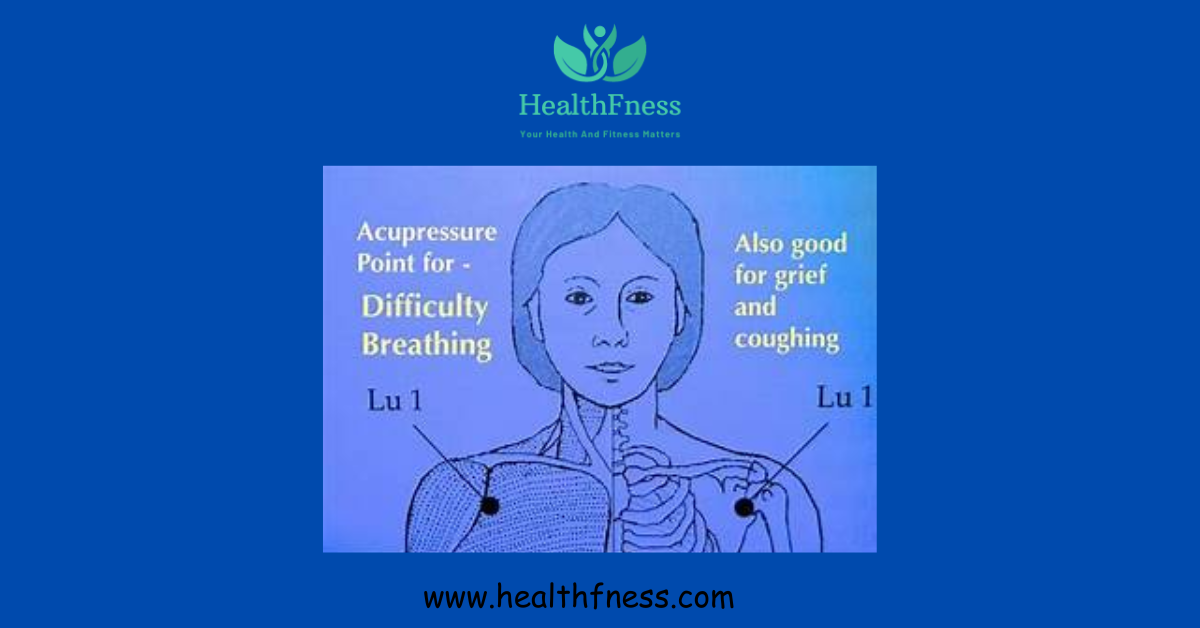A persistent cough can be more than just an annoyance; it can disrupt your sleep, drain your energy, and impact your daily life. While reaching for over-the-counter syrups is a common reflex, ancient healing traditions offer a powerful, drug-free alternative. Acupressure, a cornerstone of Traditional Chinese Medicine (TCM), uses targeted pressure on specific points of the body to relieve symptoms and restore balance, including that nagging cough.
Whether you’re battling a dry, tickly throat, chest congestion with phlegm, or a cough that keeps you up at night, understanding and using pressure points can offer surprising relief. This comprehensive guide will walk you through the science and practice of using acupressure for coughing. We’ll explore the most effective points, provide step-by-step instructions, examine the latest scientific research, and give you the knowledge to safely use this technique for yourself and your family.
What is Acupressure? An Overview of How It Works
Acupressure is an ancient healing art based on the principles of Traditional Chinese Medicine. Its core concept revolves around Qi (pronounced “chee”), the vital life force or energy that flows throughout the body along specific pathways called meridians.
According to TCM, when the flow of Qi is balanced and unobstructed, the body is in a state of health. However, factors like stress, illness, or injury can block or disrupt this flow, leading to pain, discomfort, and symptoms like coughing. Acupressure works by applying firm, steady pressure to specific points on these meridians, known as acupoints. Stimulating these points helps to:
- Release Blockages: Clears obstructions in the meridians, allowing Qi to flow freely.
- Improve Circulation: Enhances blood flow to tissues, which can reduce inflammation and promote healing.
- Relax Muscles: Eases tension in the chest, throat, and diaphragm that can trigger or worsen coughing fits.
- Calm the Nervous System: Reduces stress and anxiety, which are often linked to spasmodic or chronic coughing.
- Support Organ Function: According to TCM, many acupoints are directly linked to the health of the Lungs, helping to strengthen their function and clear irritants.
Think of it like unkinking a garden hose. By applying pressure to the right spot, you restore the flow of energy, allowing your body’s natural healing mechanisms to take over and alleviate the cough.
Causes and Background: A Traditional and Modern View of Coughs
To effectively use pressure points for coughing, it helps to understand what causes a cough from both a modern medical and a TCM perspective.
Common Causes of Coughing
From a Western medical standpoint, a cough is a reflex action to clear your airways of mucus and irritants. Common causes include:
- Viral Infections: The common cold and flu are frequent culprits.
- Allergies and Asthma: Inflammation and hypersensitivity in the airways can trigger chronic coughing.
- Postnasal Drip: Mucus dripping down the back of the throat from the nose or sinuses.
- GERD (Gastroesophageal Reflux Disease): Stomach acid irritating the esophagus and throat.
- Environmental Irritants: Smoke, dust, pollution, and dry air.
- Bacterial Infections: Such as pneumonia or bronchitis.
A TCM Perspective on Cough Types
TCM classifies coughs not just by the symptom, but by the underlying imbalance. This nuanced approach helps in selecting the most effective acupressure points. Here are the main patterns:
- Wind-Cold Invasion: This is your typical cough from a common cold, often accompanied by chills, a runny nose with clear mucus, and body aches. The cough may produce thin, white phlegm.
- Wind-Heat Invasion: This resembles the flu, with symptoms like fever, a sore throat, thirst, and a cough that produces thick, yellow or green phlegm.
- Damp-Phlegm Accumulation: This results in a persistent, wet cough with lots of sticky, white phlegm. It’s often associated with a feeling of heaviness in the chest and poor digestion.
- Lung Yin Deficiency (Dryness): This manifests as a dry, hacking, non-productive cough that may worsen at night. It’s often accompanied by a dry throat, hoarseness, and sometimes night sweats.
The Benefits of Using Acupressure for Cough Relief
Integrating acupressure into your wellness routine offers numerous advantages, especially for managing a cough:
- Completely Natural and Drug-Free: It provides relief without the potential side effects of medications, such as drowsiness or dizziness.
- Accessible and Convenient: You can perform acupressure on yourself anytime, anywhere, whether you’re at your desk, on the couch, or in bed at 3 a.m.
- Addresses the Root Cause: Unlike symptom-masking remedies, acupressure aims to correct the underlying energy imbalances contributing to the cough.
- Empowering Self-Care: It gives you a hands-on tool to manage your own health and well-being.
- Complements Other Treatments: Acupressure can be safely used alongside conventional medical treatments to enhance their effectiveness and speed up recovery.
Risks, Side Effects, and When to See a Doctor
Acupressure is overwhelmingly safe when performed correctly. The primary side effect might be temporary soreness or bruising at the pressure point if too much force is used. However, it’s crucial to be mindful of certain precautions.
Safety Precautions:
- Apply firm, deep pressure, but never to the point of intense pain.
- Avoid applying pressure directly on open wounds, varicose veins, inflamed skin, or recent injuries.
- Pregnancy: Certain acupressure points, particularly those on the lower abdomen, lower back, and specific points on the hands and legs (like LI4 and SP6), are traditionally thought to induce labor and should be avoided unless under the guidance of a trained professional.
When to Consult a Healthcare Professional
While acupressure is excellent for managing common coughs, it is not a substitute for medical care. You should see a doctor if your cough is accompanied by any of the following:
- A fever higher than 101°F (38.3°C)
- Shortness of breath, wheezing, or difficulty breathing
- Coughing up blood or bloody mucus
- Chest pain
- A cough that lasts for more than three weeks or is progressively worsening
- Unexplained weight loss
This is essential for ruling out more serious underlying conditions like pneumonia, chronic bronchitis, or other lung diseases.
Latest Studies and Scientific Findings on Acupressure for Cough
While acupressure is rooted in ancient tradition, modern science is increasingly validating its effectiveness. Much of the research focuses on acupuncture (which uses needles), but the principles and points are the same for acupressure.
- A 2024 meta-analysis published in Medicine investigated acupuncture-related therapies for chronic cough. The researchers concluded that these therapies could significantly improve cough symptoms and quality of life, suggesting they are a beneficial complementary treatment.
- Research in the European Journal of Oncology Nursing (2024) found that acupuncture was effective in treating a cluster of cough-related symptoms in lung cancer patients, demonstrating its ability to provide relief even in complex medical scenarios.
- A 2021 meta-analysis focused on cough-variant asthma found that acupuncture could effectively relieve cough symptoms and improve lung function, highlighting its role in managing chronic respiratory conditions.
These studies, among others, suggest that stimulating specific acupoints can modulate the nervous system, reduce inflammation, relax bronchial smooth muscles, and regulate immune function, providing a scientific basis for how acupressure helps alleviate coughs.
Key Pressure Points for Coughing: A Comparison Table
This table summarizes the most effective pressure points for different types of coughs, making it easy to find the right one for your needs.
| Acupressure Point | Location | How it Helps | Best For |
|---|---|---|---|
| Lung 5 (LU-5) / Chize | On the inner elbow crease, on the thumb side of the large tendon. | Clears heat from the Lungs, transforms phlegm, and descends rebellious Lung Qi. | Wet, productive coughs with yellow/green phlegm; chest congestion. |
| Kidney 27 (KI-27) / Shufu | In the depression just below the collarbone, next to the breastbone. | Opens the chest, relieves shortness of breath, and calms coughing fits. | Coughing at night; chest tightness; asthma-related cough. |
| Conception Vessel 22 (CV-22) / Tiantu | In the hollow at the base of the throat, just above the sternum. | Directly soothes the throat, reduces irritation, and stops spasmodic coughing. | Dry, itchy, or tickly throat; sudden coughing fits. |
| Kidney 6 (KD-6) / Zhaohai | In the hollow directly below the inner ankle bone. | Nourishes Yin and moistens the throat and Lungs. | Chronic dry, hacking cough; sore throat from dryness. |
| Stomach 40 (ST-40) / Fenglong | On the lower leg, about halfway between the kneecap and the outer ankle bone, two finger-widths from the shin bone. | The primary point for resolving phlegm and dampness anywhere in the body. | Any cough with excessive mucus or phlegm; chest heaviness. |
| Dingchuan (Extra Point) | On the back, about half an inch to the side of the prominent vertebra at the base of the neck (C7). | “Calms wheezing” and is specifically used to stop coughing and asthma attacks. | Asthma, wheezing, and persistent, spasmodic coughs. |
| Large Intestine 4 (LI-4) / Hegu | In the fleshy webbing between the thumb and index finger. | A master point for the face and head; releases exterior pathogens and boosts immunity. | Cough associated with colds, flu, allergies, and sinus congestion. (Note: Avoid during pregnancy). |
A Practical Guide to Using Pressure Points for Coughing
Now, let’s put this knowledge into practice. Follow these general guidelines for the best results:
- Get Comfortable: Find a quiet place where you can sit or lie down comfortably.
- Breathe Deeply: Before you begin, take several slow, deep breaths to relax your body and mind. Continue breathing deeply as you apply pressure.
- Use Firm, Steady Pressure: Use your thumb, index finger, or middle finger to apply gradual, firm pressure to the point. You should feel a slight tenderness or a dull ache, but not sharp pain.
- Hold or Massage: You can either hold steady pressure or massage the point in a small circular motion. Do this for 1-3 minutes on each point.
- Be Consistent: For best results, practice acupressure 2-3 times a day, especially when your cough is active or before bed to prevent nighttime coughing.
Step-by-Step Instructions for Key Acupoints
H3: Kidney 27 (KI-27) – For Nighttime Cough and Chest Tightness
This is a go-to point for calming the respiratory system and opening up the chest, making it invaluable for coughs that disrupt sleep.
- Locate the Point: Use your fingertips to find your collarbone (clavicle). Slide your fingers down into the soft depression just below the collarbone, right next to your breastbone (sternum). You’ll find a point on each side.
- Apply Pressure: Using the fingertips of both hands, press firmly into these depressions.
- Massage: Gently massage in a circular motion for 2-3 minutes while taking slow, deep breaths. This helps release tension across the entire chest.
H3: Conception Vessel 22 (CV-22) – For a Tickly, Irritated Throat
This point provides instant relief for that scratchy, tickling sensation that triggers an unproductive cough.
- Locate the Point: Find the large, hollow dip at the base of your throat, just above the top of your breastbone.
- Apply Pressure: Place your index finger into this hollow and apply gentle but firm pressure, angling slightly downwards.
- Hold: Hold the pressure for 1-2 minutes. As you press, try to consciously relax your throat muscles. You can also gently swallow to help soothe the area.
H3: Lung 5 (LU-5) – For a Wet, Phlegmy Cough
When your cough is heavy with mucus, this point helps the body clear it out.
- Locate the Point: Bend your arm slightly. Find the large tendon in the center of your inner elbow crease. LU-5 is located on the thumb side of this tendon.
- Apply Pressure: Use your thumb to press firmly into this spot.
- Hold and Flex: Hold the pressure for 2-3 minutes. You can gently flex and extend your arm while holding the point to deepen the stimulation. Repeat on the other arm.
H3: Stomach 40 (ST-40) – The Master Point for Phlegm
This powerful point is famous in TCM for resolving phlegm, no matter where it is in the body.
- Locate the Point: Sit down and find the bottom of your kneecap and the prominent bone on your outer ankle. ST-40 is located midway between these two points, about two finger-widths to the outside of your shin bone (tibia). You’ll feel it in the muscle.
- Apply Pressure: Use your thumb or knuckle to apply deep, firm pressure.
- Massage: Massage the point with strong circular motions for 3 minutes. Repeat on the other leg. Regular stimulation of this point can help reduce overall mucus production.
H3: Large Intestine 4 (LI-4) – For Coughs from Colds and Allergies
A versatile point for boosting the immune system and clearing the head and sinuses, which often contribute to coughing.
- Locate the Point: Hold your hand flat and bring your thumb and index finger together. The point is in the highest point of the fleshy mound that forms between them.
- Apply Pressure: Spread your fingers apart again and use the thumb and index finger of your other hand to pinch this fleshy area. Angle the pressure towards the bone of your index finger.
- Hold: Hold for 1-2 minutes, then switch hands. Remember, do not use this point if you are pregnant.
FAQs: Your Questions About Acupressure for Coughs Answered
- How quickly does acupressure work for a cough?
- Relief can sometimes be immediate, especially for throat irritation using a point like CV-22. For deeper issues like phlegm or chronic coughs, it may take several sessions or a few days of consistent practice to notice a significant improvement. Consistency is key.
- Can I use acupressure on my child for a cough?
- Yes, acupressure is generally safe and effective for children. Use much lighter pressure, gentle but firm. Hold each point for a shorter duration, about 30-60 seconds. Points like KI-27 (below the collarbone) and a gentle rubbing of the center of the chest are often soothing for children.
- Which pressure point is best for a dry, tickly cough at night?
- A combination is often best. Start with CV-22 at the base of the throat to soothe irritation directly. Follow up with KI-27 to open the chest and calm the system. Finally, press KD-6 below the inner ankle to help moisten the Lungs and throat from within. Doing this before bed can help prevent nighttime coughing fits.
- Is there a pressure point to stop coughing immediately?
- For a sudden coughing fit, pressing CV-22 at the base of the throat is often the most effective for immediate relief. Pressing firmly on LU-5 at the elbow crease can also help interrupt a spasmodic cough. Taking a slow, deep breath while holding the point can amplify the effect.
- Are there any pressure points to avoid during pregnancy?
- Yes. The most commonly cited point to avoid is LI-4 (between the thumb and index finger). Other points to avoid include SP-6 (on the inner leg above the ankle) and any points on the lower abdomen and lower back, as they can potentially stimulate uterine contractions.
- How often should I perform acupressure for my cough?
- For an acute cough from a cold, you can stimulate the points 2-4 times a day or whenever you feel a coughing fit coming on. For a chronic cough, a daily routine of 1-2 sessions is recommended to address the underlying imbalance.
Conclusion: Empower Your Health with a Simple Touch
Acupressure offers a safe, effective, and empowering way to manage one of the most common and frustrating health complaints. By understanding the principles behind this ancient practice and learning to locate a few key pressure points for coughing, you can soothe your throat, clear your chest, and calm your respiratory system without reaching for medication. Remember to be patient and consistent with your practice, and listen to your body.
While this technique provides powerful natural relief, it is also important to recognize when professional medical advice is needed. By combining the wisdom of Traditional Chinese Medicine with the safety of modern healthcare, you can breathe easier and take confident control of your well-being.
References
- WebMD. (n.d.). Acupressure Points and Massage Treatment.
- Mayo Clinic. (2023). What is acupressure and how does it work?
- Lee, B., Kwon, C.-Y., et al. (2024). Acupuncture-related therapy for chronic cough: A systematic review and meta-analysis. Medicine, 103(13), e37653.
- Zhang, C. X., et al. (2024). Efficacy of acupuncture for a cough-related symptom cluster in patients with lung cancer: A randomized controlled trial. European Journal of Oncology Nursing, 68, 102582.
- Xiong, J., et al. (2021). Acupuncture treatment for cough-variant asthma: A meta-analysis. Evidence-Based Complementary and Alternative Medicine, 2021, 6647702.
- Deadman, P., Al-Khafaji, M., & Baker, K. (2007). A Manual of Acupuncture. Journal of Chinese Medicine Publications.

Dr. Mark Jenkins, MD - General Physician (California, USA)
Dr. Mark Jenkins is a board-certified general physician based in the United States, specializing in preventive medicine, nutrition, and lifestyle health. With years of clinical experience in primary care, he is dedicated to helping patients and readers alike make informed, science-based decisions about their well-being.
As a trusted medical reviewer and contributor to Healthfness.com, Dr. Jenkins ensures that all health content meets the highest standards of accuracy, safety, and evidence-based medicine. His expertise bridges modern medical science with practical, everyday wellness strategies, making complex topics approachable for all audiences.
Outside the clinic, Dr. Jenkins is passionate about living the healthy lifestyle he teaches. He enjoys hiking with his dog, experimenting with vegetarian cooking, and exploring the latest health research. He believes that small, consistent lifestyle changes lead to lasting health improvements, and he aims to inspire readers to take proactive steps toward a healthier, happier life.
Explore more of Dr. Jenkins’ evidence-based insights at Healthfness.com



